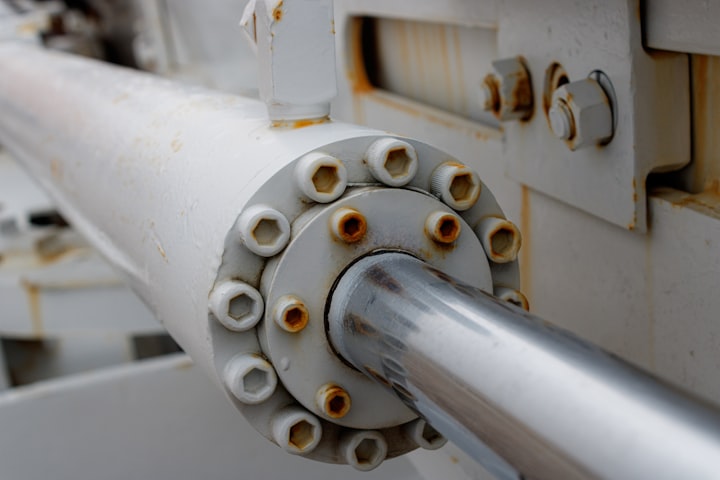Hydraulic Jacks Unveiled: A Comprehensive Guide to Their Functionality and Uses
Hydraulic Jacks Unveiled: A Comprehensive Guide to Their Functionality and Uses

Hydraulic jacks are a marvel of engineering, enabling us to lift heavy loads with relative ease and precision. Found in various industries, from automotive to construction and aerospace, hydraulic jacks have become indispensable tools for handling substantial weights. This comprehensive guide aims to demystify the inner workings of hydraulic jacks, explore their diverse applications, and provide valuable insights into choosing and using them safely and effectively.
How Hydraulic Jacks Work: Understanding the Mechanism?
At the core of hydraulic jacks lies a straightforward yet effective mechanism. These lifting devices consist of a hydraulic pump, a cylinder, a reservoir of hydraulic fluid, and control valves. When force is applied to the pump, it pushes hydraulic fluid into the cylinder, generating pressure. Pascal's law, a fundamental principle in fluid mechanics, dictates that this pressure is transmitted uniformly in all directions. As a result, the force applied to the small piston in the pump is magnified when it acts on the larger piston in the cylinder, effectively lifting the load with great force.
Get Ahead of the Competition with TorcStark High-Performance Solutions. Shop Today.
Types of Hydraulic Jacks and Their Applications
Hydraulic jacks come in various designs, each tailored to specific lifting needs. Bottle jacks are compact and widely used in automotive and industrial settings. They are ideal for lifting vehicles during repairs and maintenance tasks. Floor jacks, with their sturdy construction, are commonly found in garages and workshops, providing efficient lifting for various applications.
Hydraulic toe jacks are specialized jacks designed for precision lifting in confined spaces. Their ability to slide beneath low-clearance objects makes them invaluable for positioning heavy machinery and equipment. Long ram jacks, on the other hand, offer extended reach, making them ideal for lifting in construction and manufacturing settings.
Determining Lifting Capacity and Choosing the Right Hydraulic Jack
Selecting the appropriate hydraulic jack for a particular task requires understanding weight ratings and load limits. Each hydraulic jack is designed to handle specific weights, and exceeding these limits can lead to equipment failure and safety hazards. It is essential to consider factors such as the weight of the load, the lift height required, and the specific application when choosing a hydraulic jack.
Safety margins should also be taken into account, ensuring that the selected hydraulic jack can comfortably handle the intended load without operating near its maximum capacity. By choosing the right hydraulic jack for the job, operators can ensure safety and maximize efficiency.
Safety Guidelines and Best Practices for Using Hydraulic Jacks
Safety is paramount when working with hydraulic jacks. Proper setup and positioning are critical to ensuring stability during lifting operations. Hydraulic jacks should be placed on a firm, level surface, and the load should be centered and balanced to prevent tilting or tipping.
It is essential to use appropriate support stands and chocks to secure the load after lifting. Never rely solely on hydraulic jacks to hold a load for an extended period. Support stands provide a stable and secure foundation to prevent accidents and protect personnel working nearby.
Furthermore, operators should be trained in proper lifting procedures and safety protocols. Understanding the limitations and potential hazards associated with hydraulic jacks is crucial for safe operation.
Maintenance and Care of Hydraulic Jacks
Regular maintenance is essential to ensure the longevity and optimal performance of hydraulic jacks. Routine inspections should be conducted to identify any signs of wear, leakage, or damage. Hydraulic fluid levels and quality should be checked regularly, and any contaminated or degraded fluid should be replaced promptly.
Proper lubrication and cleaning of hydraulic jack components are essential to prevent corrosion and ensure smooth operation. Storing hydraulic jacks in a clean and dry environment also contributes to their longevity.
Applications of Hydraulic Jacks in Different Industries
The versatility of hydraulic jacks makes them indispensable in various industries. In the automotive sector, hydraulic jacks are commonly used in repair shops and garages for lifting vehicles during maintenance, tire changes, and repairs.
Construction companies rely on hydraulic jacks to lift heavy materials and equipment, streamlining building processes and ensuring safe construction practices. Aerospace applications also benefit from hydraulic jacks, supporting maintenance and assembly processes for aircraft components.
In manufacturing and industrial settings, hydraulic jacks play a vital role in various assembly and positioning tasks. These jacks are also utilized in warehousing and logistics, as well as mining and exploration, where heavy loads need to be lifted and moved efficiently.
Specialized Hydraulic Jacks for Unique Lifting Challenges
Some lifting scenarios require specialized hydraulic jacks to meet unique challenges. Low profile and ultra-low profile jacks are designed for limited clearance scenarios, enabling lifting in tight spaces where other jacks may not fit.
Telescopic jacks provide extended lifting height, making them suitable for tasks that require reaching great heights. High-tonnage jacks are designed to handle extremely heavy loads, such as those encountered in heavy machinery and industrial equipment.
Advancements and Innovations in Hydraulic Jack Technology
As technology advances, hydraulic jack designs continue to evolve. Smart features and automation are being integrated into hydraulic jacks to enhance precision and efficiency. Sensor technology provides real-time data on lifting conditions and equipment performance, allowing for more accurate and controlled operations.
Engineers are exploring eco-friendly hydraulic fluid options and sustainable engineering practices to reduce the environmental impact of hydraulic systems. Advancements in materials and design are also anticipated to lead to lighter yet stronger hydraulic jack components, further improving portability without compromising lifting capabilities.
Future Trends and Potential Applications of Hydraulic Jacks
The future of hydraulic jacks holds promise, especially with the growing demand for automation in various industries. The integration of smart technology and sensors is expected to increase safety and efficiency in lifting operations, minimizing the risk of accidents and human error.
Advancements in materials science could lead to the development of more durable and cost-effective hydraulic jacks, enabling a wider range of applications. As industries continue to evolve, hydraulic jacks will likely play an even more integral role in modern lifting practices.
Conclusion
Hydraulic jacks are remarkable devices that have revolutionized the way heavy loads are lifted and moved across industries. Understanding the inner workings of hydraulic jacks, along with their applications and safety considerations, is essential for their effective and safe use. As technology continues to progress, the future of hydraulic jacks looks promising, with a focus on safety, efficiency, and sustainability. By embracing the potential of hydraulic jacks and adhering to best practices, industries can continue to unlock their full lifting potential.






Comments
There are no comments for this story
Be the first to respond and start the conversation.